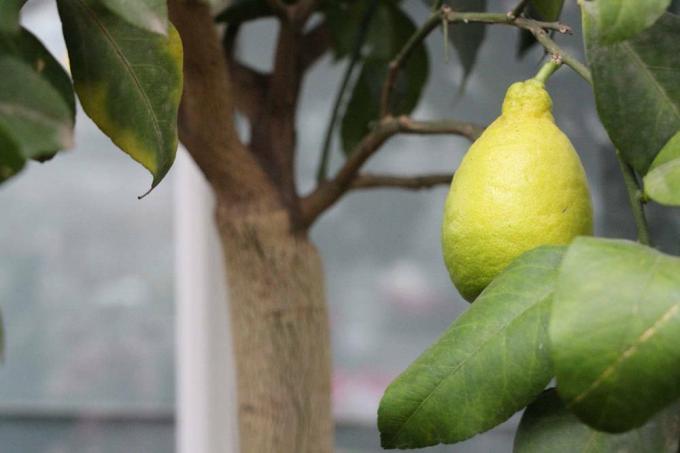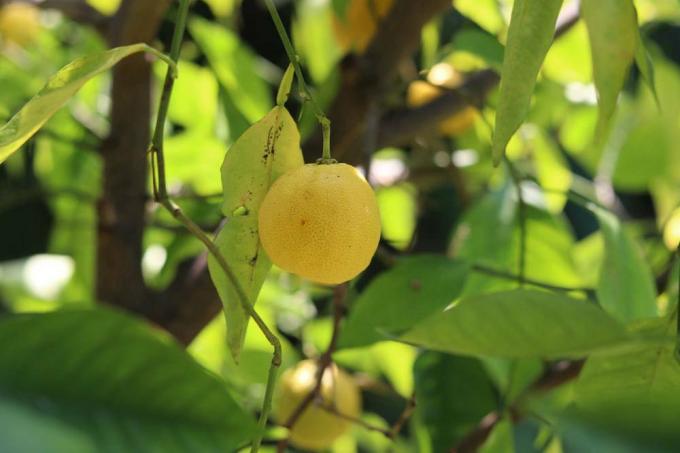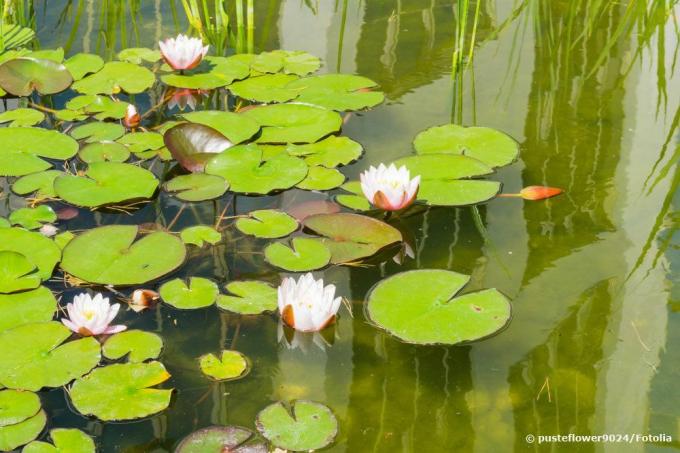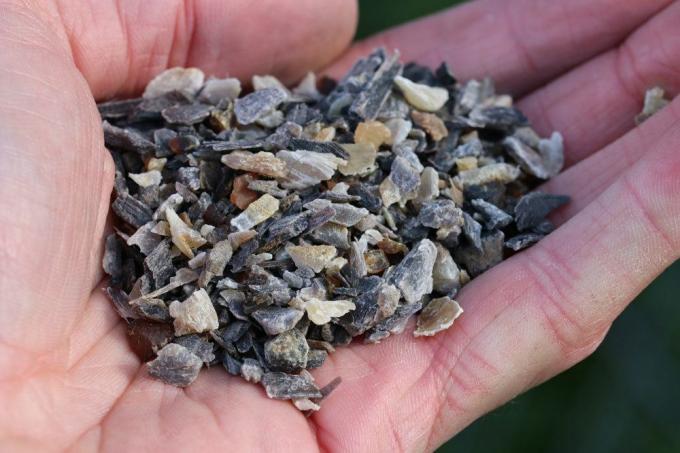
table of contents
- Lemon tree fertilizer
- Lemon leaves and peel
- Coffee and tea as lemon tree fertilizer
- Nutrient-rich water
- Plant stock
- Blood and blood meal
- Seaweed
- Horn shavings, compost and manure
lemon Tree- Making fertilizer yourself is quite easy if you have the right knowledge. Because even simple home remedies are enough to provide the lemon with the nutrients it needs. Interested hobby gardeners can find out what is important during production in the following instructions.
Lemon tree fertilizer
The lemon tree needs various nutrients in order to grow and develop many fruits. The main things are:
- nitrogen
- potassium
- phosphorus
These three substances are found in commercially available complete fertilizers for citrus and other Mediterranean plants in a ratio of three to four parts nitrogen, two parts potassium and one part phosphorus contain. An alternative to special fertilizers for citrus plants is tomato fertilizer, as it has a similar ratio of nutrients.
In addition to the components mentioned, lemon trees also need other minerals and trace elements. This includes:
- boron
- iron
- copper
- magnesium
- manganese
- molybdenum
- zinc

Note: Neither the ratio nor all of the trace elements can simply be created using your own compilations. It is therefore not enough to just produce or use one fertilizer. Instead, different (house)middle alternately used to meet the nutritional needs of the lemon.
Lemon leaves and peel
It is very easy to make a fertilizer yourself from your own plant parts of the lemon. In nature, leaves and fruits of the lemon tree fall off and rot on the tree disc. This gives the plant back important nutrients. When cultivating in a pot or tub, however, often not enough fallen plant parts land or are removed so that no mold can form on the substrate surface. However, making a fertilizer from the plant parts does not require much effort. The following applications are possible:
- Crumble the dried leaves and work them into the soil
- Grate lemon peel, allow to dry and also pour or work into the substrate
- When repotting and changing soil, put parts of leaves and bowls on the bottom of the pot and on the substrate
Coffee and tea as lemon tree fertilizer
Coffee grounds and tea can be wonderful fertilizers for the lemon tree. They contain the three main nutrients needed and have an acidic effect on the pH of the earth. In addition, both tea and coffee grounds are available in almost every household and are easy to use.
Coffee grounds are dried on the ground or mixed under the substrate when repotting. When used on earth, a maximum of one dose per month should be given. Administration directly into the substrate can be carried out during repotting.
Green and black tea are suitable both as tea grounds and as a tea infusion to fertilize the lemon tree. Tea infusion is poured directly into the water and given once a week during the growth. A dosage of around one cup is sufficient. Tea leaves release the nutrients more slowly, so they need to be used less often. It is enough to distribute the contents of a tea bag around the world once a month.
Nutrient-rich water
Another way of fertilizing is in nutrient-rich water. This is also more common in the home and garden, because it is:
- the cooking water of potatoes and other vegetables
- Aquarium water
- Pond water
However, with water from the aquarium or garden pond, it is important that it has not been treated with medication for fish and other aquatic animals or chemicals. Otherwise the lemon tree could be damaged. The water does not need any preparation for fertilization, it is simply used to water the plant.

Plant stock
Plant stock is an ideal fertilizer for the lemon tree and other crops. Nettle and comfrey are particularly suitable for this brew, as they not only contain numerous nutrients, but they are also present in an advantageous ratio. It is also very easy to make the fertilizer yourself. The following instructions show step by step what is necessary for this:
1. The leaves and stems of comfrey or nettle are cut into small pieces and placed in a jar or other closable container. For example, a mason jar is ideal. It is important to fill or stuff the plant parts as tightly as possible.
2. The vessel is filled with water and sealed. In order to be able to use the brew as quickly as possible, it is placed in a sunny and warm place after sealing. As a result, the nutrients from nettle or comfrey pass into the water in a shorter time and the solution begins to ferment.
3. The brew can be used after twelve hours at the earliest. However, it is better to use it as fertilizer for the lemon tree after two days. If you don't want to wait that long, after eight hours in the sun, you can let the plant simmer gently for about 30 minutes on a low heat. The plant parts are left in the liquid during cooking.
4. After fermentation, the brew can be used directly as a fertilizer. After simmering, it should cool down first. In any case, it is mixed with water in a ratio of 1: 1 and thus fertilizes the plant when watering. A monthly dose of the plant stock is sufficient.
Blood and blood meal
Fertilizing with blood or blood meal is recommended whenever the lemon tree shows signs of iron deficiency. This is a yellowish to brownish discoloration of the leaves, while the leaf veins remain green. The deficiency symptom is very easy to recognize due to its characteristic appearance.
Blood and blood meal contain a large amount of iron and can therefore remedy the deficiency relatively quickly. For blood meal, one to three teaspoons per week is sufficient. If the blood is fresh or frozen, the amount may be doubled. Both fertilizers are applied directly to the substrate and the plant is then watered.
If the fruits of the lemon are consumed, blood meal or blood should come from reliable and harmless sources. Suitable providers in the case of fresh or frozen blood are, for example, butchers and barf shops for dogs and cats. Blood meal is found, among other things, specifically as a fertilizer in specialist shops.
Seaweed
Algae and so-called algae lime or kelp flour contain large amounts of vitamins and minerals. However, they also have a basic pH. Therefore, they are only optimal fertilizers if the substrate becomes too acidic. So before they are used for nutrient supply, the pH of the soil should be determined.
Horn shavings, compost and manure
Manure, horn shavings and compost can be used individually or in combination as fertilizer for the lemon. Since the nutrients are released comparatively slowly, the organic materials are suitable as long-term fertilizers. It therefore makes sense to add them to the substrate when repotting. However, they can also be given to earth. In any case, the following points must be observed:
- the compost should already have rotted well
- the horn shavings must be finely chopped up
- Manure should come from a reliable source and not contain any drug residues if the lemons are intended for consumption
- Mix the fertilizer well with the substrate when repotting

Note: To make the combination, two parts each of manure and compost as well as one part of horn shavings are used.
